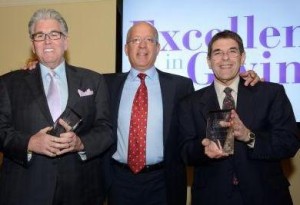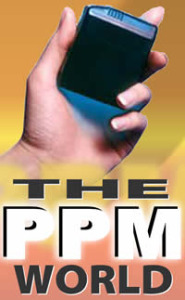Defining success for a sports radio station can be measured in many different ways. There’s laying out guidelines and goals for what you expect from each individual. There’s bottom line revenue. There’s digital and mobile growth, social media engagement, connection in the community, content strategy and execution and of course the almighty ratings book.
 Yes it’s true, the ratings game isn’t an exact science and of course most programmers complain about the lack of meters in each individual market but whether it’s fair or unfair, every single station in every market deals with the same system and your job is to deliver numbers that your sales team can use to generate more revenue for your company. Nobody complains when the numbers are good but we all piss and moan when they’re lower than expected.
Yes it’s true, the ratings game isn’t an exact science and of course most programmers complain about the lack of meters in each individual market but whether it’s fair or unfair, every single station in every market deals with the same system and your job is to deliver numbers that your sales team can use to generate more revenue for your company. Nobody complains when the numbers are good but we all piss and moan when they’re lower than expected.
I’ve had my share of ups and downs with numbers but I do believe they matter. As long as advertisers seek them and decide future ad buys on the station I operate based on them, they’ll remain a heavy focus for me. While it’s easy to make excuses and complain about the systems flaws (trust me they have plenty), everyone is playing the same game.
How many times have you seen the following “My station doesn’t subscribe to Arbitron/Nielsen because they don’t show our brand’s true audience. We remain focused on super serving our audience and advertisers“. When I hear that I start to chuckle because the real translation is “our numbers suck and we can’t convince anyone we have an audience so we’ll go on the offensive to defend our position so advertisers don’t pull their business from us”.
 Then there’s the talent side of things “I don’t believe in ratings. I’ve never seen a meter. I know when the show is good and we have a big audience because people see me and tell me they listen“. I’ve run 4 different radio stations in 3 different markets over the past 8 years and there’s always someone taking that position. What they mean to say is “I need an excuse to fall back on in case my numbers aren’t good because otherwise I’ll have a hard time asking for a raise in the future. Besides, I have a strong following on social media and that shows that I have a huge audience”.
Then there’s the talent side of things “I don’t believe in ratings. I’ve never seen a meter. I know when the show is good and we have a big audience because people see me and tell me they listen“. I’ve run 4 different radio stations in 3 different markets over the past 8 years and there’s always someone taking that position. What they mean to say is “I need an excuse to fall back on in case my numbers aren’t good because otherwise I’ll have a hard time asking for a raise in the future. Besides, I have a strong following on social media and that shows that I have a huge audience”.
In both cases I understand the skepticism due to what’s been created by Nielsen as a result of weak measurement but what I’ve yet to see is a radio station not reward an on-air talent or PD who was delivering strong ratings. Excuses come up when audience numbers are low but when they’re high, everyone brags and wants a pat on the back and companies usually reward you for it. Ratings are needed to justify the companies ability to command higher ad rates and your ability to deliver them is a critical part of your job. Without them as a host or programmer, your position could be in jeopardy.
Ask yourself this, how can we make money in this business if it’s based on subjective opinion of what we think of our own shows? Is a talent really going to walk into an office and say to a PD “My show isn’t as good as I thought it would be or what you hoped it would be and I sense the audience has checked out, maybe you should pull the plug on it“? Of course not.
 On-Air talent are conditioned to pump themselves up by telling you “I have a huge audience, I know what works” but can they really prove that? Have they gone out and personally counted every listener who interacted with them in public, on social or through the station text account? Of course not. When a talent tells me they had 200-1000 people attend or send them a message on social media as evidence of having a big audience, I remind them that 200-1,000 people in a market made up of 7 million is not a number to brag about.
On-Air talent are conditioned to pump themselves up by telling you “I have a huge audience, I know what works” but can they really prove that? Have they gone out and personally counted every listener who interacted with them in public, on social or through the station text account? Of course not. When a talent tells me they had 200-1000 people attend or send them a message on social media as evidence of having a big audience, I remind them that 200-1,000 people in a market made up of 7 million is not a number to brag about.
About 15-months ago I listened to Mike Francesa from WFAN in NY talk about the way he looks at ratings. Many would agree that Mike has been one of the most influential and dominant sports radio personalities of our lifetime and as I heard him share his views on this subject I found myself intrigued. First consider that he’s been on the air with WFAN for over 25 years and during that time he has delivered more than 80 #1 ratings performances with Men 25-54. That is incredibly impressive especially in the country’s largest market.
Some will say his success is due to being on WFAN which has a great signal, strong heritage and was the nation’s first true all-sports format and while that deserves consideration, you’d be doing him a disservice if you assumed that’s why he’s succeeded. Mike spends 5.5 hours per day on the air and he’s seen as the authority on NY sports. He’s won alongside Christopher “Mad Dog” Russo as well as on his own. His station lost major players such as Russo and Don Imus yet Mike has continued to dominate the market.
 What really impressed me most about Mike’s speech was when he discussed the value he places on his ratings performance. To learn that the #1 guy in the top US market meets every Monday with his PD to see how he’s stacking up against the competition was impressive. How many on-air talent do you know who even ask a question about their own performance at the end of a month let alone on a weekly basis?
What really impressed me most about Mike’s speech was when he discussed the value he places on his ratings performance. To learn that the #1 guy in the top US market meets every Monday with his PD to see how he’s stacking up against the competition was impressive. How many on-air talent do you know who even ask a question about their own performance at the end of a month let alone on a weekly basis?
WFAN makes a lot of money and Mike does extremely well for himself and nobody at his company is going to tell an advertiser they can’t demonstrate performance when ratings are requested. He considers it to be his report card and when you’re delivering straight A’s, you’re not embarrassed to show off your grades. To get a sense of Mike’s views on the ratings game check out this video.
While I’ve spent the first part of this piece on the mindset of ratings, the next level of what I want to discuss has to do with the demographic for which sports radio is analyzed. Anyone who works in this format knows that your success or failure is determined by how you perform with Men 25-54. You can create neat little stories with Men 18+, Men 18-34, P6, 12+ or Adults 25-54 but the number that matters when all is said and done are Men 25-54.
This is the demographic that advertisers expect sports radio stations to be strongest in and and it’s what on-air personalities and programmers get bonused on. It’s also what your company looks at to determine if the investment in a sports radio station is paying off. Every month when my ratings come out I’ll look at P6 to see what our overall cume for the station is and I’ll check out the Adults 25-54 demo to see if I can provide any stories for sales to help with some other possible buys but the main focus for myself and all involved in my group (and every station I’ve ever worked at) is always Men 25-54.
 I enjoy getting the ratings report each month and I’ve found that when you create a great product and surround yourself with talented people, getting an audience to listen and reward you with proof of performance isn’t hard. While in St. Louis, my former brand 101 ESPN started 33rd and was consistently in the Top 5 in ratings within 12-18 months, including reaching #1.
I enjoy getting the ratings report each month and I’ve found that when you create a great product and surround yourself with talented people, getting an audience to listen and reward you with proof of performance isn’t hard. While in St. Louis, my former brand 101 ESPN started 33rd and was consistently in the Top 5 in ratings within 12-18 months, including reaching #1.
When I built 95.7 The Game in SF, we started in 27th place and in under 4 years climbed to as high as 3rd with Men 25-54. It took a lot of luck, hard work, personnel changes and loss of sleep and none of it would’ve happened without a great staff performing day in and day out to entertain listeners.
While the focus for ratings success is Men 25-54, Francesa raised an interesting point about what the demographic should be. He says the format should be measured by Men 35-69. He argues that Men over 60 years old have more money whereas younger male adults can barely pay rent and if advertisers are seeking people with wealth to purchase their products, then they should put a heavier emphasis on the older demographic.
The logic makes sense but I don’t agree that Men 35-69 should be the focus. If it’s only about money then I’d give it stronger consideration but ratings are also supposed to be about listenership and I think the reason sports stations are migrating to the FM dial are because Men 25-34 have a stronger interest in the product than ever before. It’s during these years of a man’s life that he usually starts listening and forming a bond with the sports radio format and I don’t think that can be dismissed and not measured.
 Whether it’s Men 25-54, Men 25-64, Men 25-69 or another demographic, is subjective and while I don’t have the perfect answer, I do think that as our business grows, all options should be explored. If we can change the way radio gets measured from diary to PPM and we can see stations switch to FM and begin to deliver huge numbers on mobile and online, then we owe it to our industry to make sure that we get the best measurement possible to showcase the brand’s strength.
Whether it’s Men 25-54, Men 25-64, Men 25-69 or another demographic, is subjective and while I don’t have the perfect answer, I do think that as our business grows, all options should be explored. If we can change the way radio gets measured from diary to PPM and we can see stations switch to FM and begin to deliver huge numbers on mobile and online, then we owe it to our industry to make sure that we get the best measurement possible to showcase the brand’s strength.
I think it’s silly that mobile listening and web streaming are rarely accounted for when we can see the amount of listening sessions that take place on our brands. I understand that it’s still about the over the air listening activity but with the future changing rapidly, the industry will have to evolve and put a stronger focus on “audio measurement“, not just radio measurement.
To help paint a better picture of the importance of ratings and the way people in our business see them, I asked 3 questions to some of the best minds in the sports radio business today. Taking part in the panel are the following people:
- Jason Dixon – Program Director of Detroit Sports 105.1 FM
- Jeff Austin – Program Director of 1080 The Fan in Portland
- Tim Spence – Station Manager of 102.3/105.5 ESPN Denver
- Ryan Hatch – VP of News and Sports at 92.3 KTAR and Arizona Sports 98.7 FM
- Brian Long – Program Director of XTRA 1360 and Newsradio AM 600 KOGO in San Diego
What demographic matters most to your radio station in determining whether or not it’s been a successful month in the ratings?
Dixon: I spend most of my time looking at Men 25-54 because that’s the number that matters most to our sales department. From there I dissect the big number to see what we are doing in the various cells to find the station’s strengths and weaknesses.
Austin: Men 25-54. It’s a wide demo but the one that the vast majority of our buys are predicated upon. We need to score with the older half of this demo as a sweet spot, and continually develop listeners in the younger half, so attention to the entire demo is a must.
Spence: What’s our job? Men. Where’s the money? 25-54. Once you are established in that demo of Men 25-54 then most stations start expanding and developing P25-54.
 Hatch: Men 25-54 is always the primary demo that sports radio stations target and evaluate, and it is ours as well but we have raised our expectations. Now on FM, our goal is to drive a male number that rolls up into a Top 10 Persons 25-54 number with the primary new audience driver coming from the younger 25-34 male demo that was almost completely inaccessible on AM. If we don’t deliver Top 3 Men 25-54 and Top 10 Persons 25-54 performance in the Fall, we’re not delivering the radio audience we need to.
Hatch: Men 25-54 is always the primary demo that sports radio stations target and evaluate, and it is ours as well but we have raised our expectations. Now on FM, our goal is to drive a male number that rolls up into a Top 10 Persons 25-54 number with the primary new audience driver coming from the younger 25-34 male demo that was almost completely inaccessible on AM. If we don’t deliver Top 3 Men 25-54 and Top 10 Persons 25-54 performance in the Fall, we’re not delivering the radio audience we need to.
Long: Men 25-54. This demo is the sweet spot for us and our targeted clients.
JB NOTE: Every single programmer here has the same mentality of capturing Men 25-54. While there are some interesting variations such as what Ryan is looking to capture in Phoenix with his brand’s migration to FM, the conversation starts with Men 25-54.
What do you think should be the demographic to measure sports talk radio’s success?
 Dixon: The most important demo to me is the one where the money is. If tomorrow, agencies and clients start placing buys based on men 35-49 or men 18-24, that will be my target. As programmers in a narrow format, we have to keep our eyes on the prize. We all want great ratings so we can pat ourselves on the back, collect ratings bonuses etc. but the fact is that they are sales tools.
Dixon: The most important demo to me is the one where the money is. If tomorrow, agencies and clients start placing buys based on men 35-49 or men 18-24, that will be my target. As programmers in a narrow format, we have to keep our eyes on the prize. We all want great ratings so we can pat ourselves on the back, collect ratings bonuses etc. but the fact is that they are sales tools.
Austin: Men 25-54. If you want to avoid being a “niche” station, which healthy sports stations should make a goal of, and get more listeners under your tent, you have to be a great “male listen.” If you focus on a smaller demo, you risk becoming less-relevant with large portions of your audience. If you widen your focus to consider males outside of that demo, or females, you become bland and non-exclusive to the majority of your audience.
 Spence: Well, first as I mention above, it’s Men 25-54. That said, the heart of the demo is what MAKES the demo. If I own/control/kill it with Men 35-44, I’ll p/u both ends of the demo. If I focus too much towards either end, I potentially skew the other side of the demo.
Spence: Well, first as I mention above, it’s Men 25-54. That said, the heart of the demo is what MAKES the demo. If I own/control/kill it with Men 35-44, I’ll p/u both ends of the demo. If I focus too much towards either end, I potentially skew the other side of the demo.
Hatch: Our job will always be to deliver the most valuable audience that we can connect to our advertising partners, which will continue to be affluent men with purchase power and influence. If you’re only talking about radio ratings, it’s simple. As long as the ad agencies and buyers continue to determine Men 25-54 and Persons 25-54 are the most important demos to them, it’s going to remain that way for us.
Long: Men 25-64. People are living longer and putting off having children until later in life. Ultimately, delaying retirement . 60 is the new 50 and people’s spending habits have changed.
JB NOTE: There’s some great stuff here. First, Brian raises some excellent points about people living longer, retiring later and having children later. That makes a lot of sense in explaining why adding to the back end of the demographic could make sense in the future. I also love what Jason and Ryan had to say about satisfying the demand of agencies and clients. Until advertisers change their views, Men 25-54 will remain the format’s key focus.
How important are ratings to your business and the way you position your radio station?
Dixon: Personally I love ratings. They can provide validation for your hard work and they can be a big warning sign for something that is not working. That being said, they are not the “be all , end all” of the sports radio business. One of my go to lines is, “I’ve never seen a Sports Radio PD with average ratings and great billing fired.” The 6 plus number that’s published in the trades does not create the narrative of your radio station. Your content, your presentation and the stories that your sales people share on the street is what defines your radio station.
 Austin: We don’t position on-air based upon ratings, but we do in the field (sales). The key for us is to be the top sports station in our market. Without a major local play-by-play property, we especially need to own Prime. As for sharing the common goal, I think it registers more clearly with the sales force.
Austin: We don’t position on-air based upon ratings, but we do in the field (sales). The key for us is to be the top sports station in our market. Without a major local play-by-play property, we especially need to own Prime. As for sharing the common goal, I think it registers more clearly with the sales force.
Spence: The bottom line, ratings are important. They’re what takes the average sports station that sells just spots/dots and relationships to the next level. Eventually, if you don’t have ratings, sales will suffer.
Hatch: We pride ourselves on telling the entire Arizona Sports audience story and it’s incredible influence in the market. We absolutely will not allow the radio ratings alone to define success. Granted, ratings are still the most important metric as increased radio audience is still by far the quickest way to increase revenue, especially with transactional business. The difficult part is with longtime radio talent who have been trained and bonused over the years to solely let the radio ratings dictate success. It’s still a tough putt to break that habit. The reality is that while we watch significant growth among so many of our platforms, if the ratings don’t correspond, it’s tough on the guys because that’s still their biggest badge of honor.
 Long: Ratings are very important. Having ratings on a station allows both (sales and programming) the advantage of being more discerning about the type of business you are willing to take or walk from which ultimately affects the overall sound of the station.
Long: Ratings are very important. Having ratings on a station allows both (sales and programming) the advantage of being more discerning about the type of business you are willing to take or walk from which ultimately affects the overall sound of the station.
JB NOTE: There’s one key point made here by the group. Positioning your brand internally is equally as important as positioning it externally. If every aspect of an organization isn’t pulling in the same direction and singing the same tune then further discussion is needed to develop one unified message. The ratings absolutely matter but there’s multiple ways to sell that message and the benefits of the brand. Whichever direction you go, all departments must be on board and share in the same vision.

Jason Barrett is the Founder and CEO of Barrett Media. The company launched in September 2015 and has provided consulting services to America’s top audio and video brands, while simultaneously covering the media industry at BarrettMedia.com, becoming a daily destination for media professionals. Prior to Barrett Media, Jason built and programmed 95.7 The Game in San Francisco, and 101 ESPN in St. Louis. He was also the first sports programmer for SportsTalk 950 in Philadelphia, which later became 97.5 The Fanatic. Barrett also led 590 The Fan KFNS in St. Louis, and ESPN 1340/1390 in Poughkeepsie, NY, and worked on-air and behind the scenes at 101.5 WPDH, WTBQ 1110AM, and WPYX 106.5. He also spent two years at ESPN Radio in Bristol, CT producing ‘The Dan Patrick Show’ and ‘GameNight’. JB can be reached on Twitter @SportsRadioPD or by email at Jason@BarrettMedia.com.





